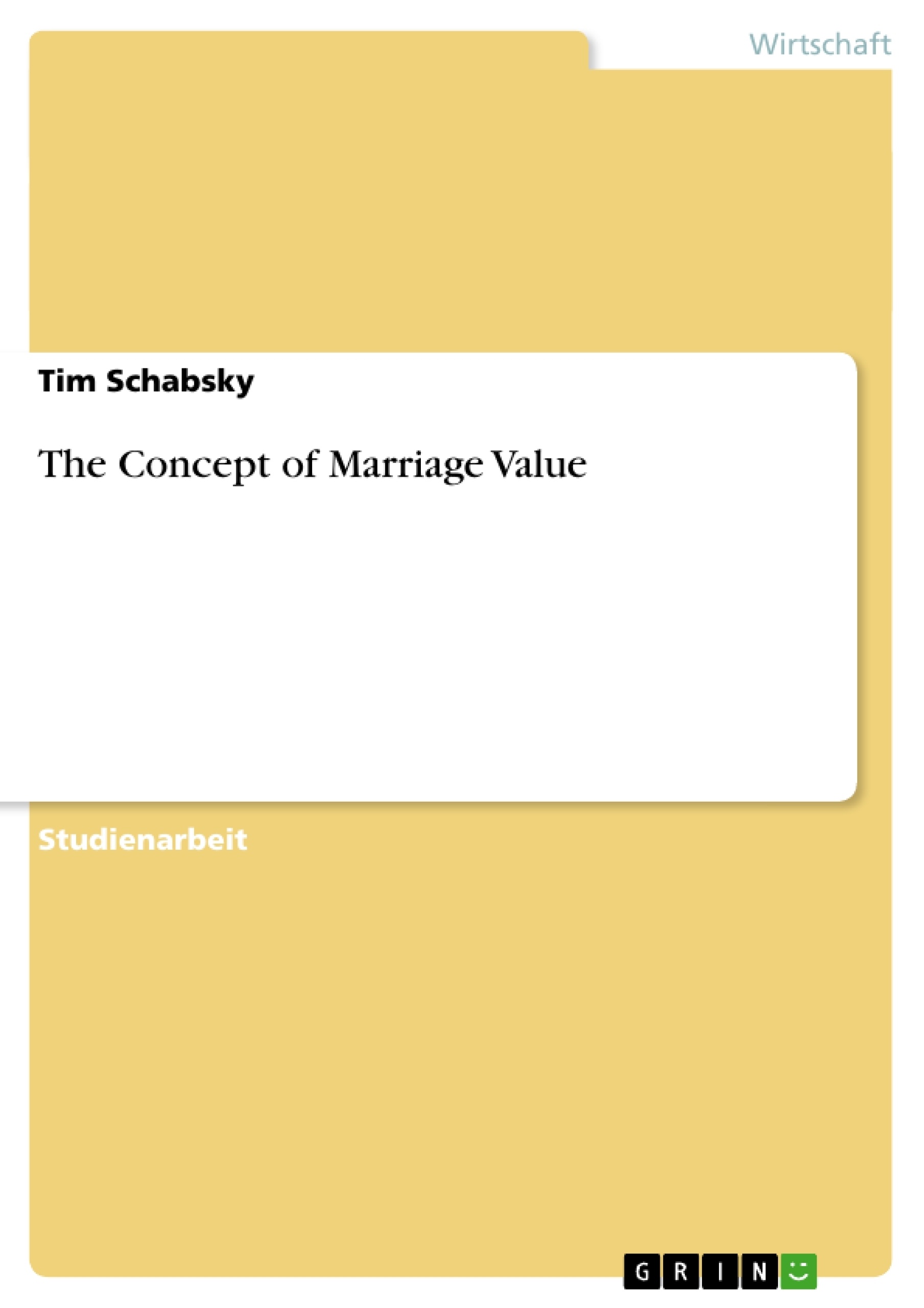1. Definition of Marriage Value,
2. Calculation of Marriage Value,
3. Distribution of Marriage Value.
Contents
The Concept of Marriage Value
Definition
Calculation of Marriage Value
Distribution of Marriage Value
Appendix A
Bibliography
The Concept of Marriage Value
Definition
The Royal Institution of Chartered Surveyors (RICS) defines synergistic or marriage value as ‘an additional element of value created by the combination of two or more interests where the combined value is more than the sum of the separate values (2012, p.8). This additional element of value can be released by either merging different interests in a single property or by combining adjacent properties owned by different individuals to a lager site usually with greater potential for development (Shapiro, Davies, Mackmin, 2009, p.157). In the following, the former case will be considered.
Calculation of Marriage Value
The given example is a variation of an illustration by Baum, Mackmin and Nunnington (2011, p.161-164). F is the freeholder of a shop and the current full rental value (FRV) is £ 28,000 p.a. on full repair and insurance terms (FRI). F let the shop to L for £ 10,000 p.a. (FRI). The lease has an unexpired term of 26 years and there are no rent reviews. Comparable shops let at FRV and with regular rent reviews yield about 8%. F wishes to become freeholder in possession. The detailed valuation can be found in appendix A.
illustration not visible in this excerpt
The net income used to value the freehold in possession does not differ from the total net income used to value the encumbered freehold and the leasehold interest. The sources of the marriage value are the differences in yields applied for valuing the different interests in the property. Finally, it is important to note that calculation of synergistic value is only an estimate and its existence and extent is determined by market outcomes (Baum, Mackim, Nunnington, 2011, p.162).
Distribution of Marriage Value
The price for which a particular interest in the property is sold, i.e. the distribution of the synergistic value, will be negotiated by the parties involved. Given that one party depends on the other to release the marriage value and under the assumption of equal bargain strength Shaprio, Davies and Mackmin (2009, p. 157) note that the marriage value should be divided equally among the parties involved. However, as depicted below, the negotiation outcome is influenced by a great variety of factors including barely quantifiable aspects such as the personalities of negotiators. Hence the distribution of marriage value cannot be computed using a formula and is likely to vary significantly depending on individual circumstances.
illustration not visible in this excerpt
In reference to Urbanaviciene, Kaklauskas and Zavadskas (2009)
The maximum sum a rational purchaser could offer is the market value of the seller’s interest plus the full marriage value. In this case the buyer would neither gain nor loose wealth. The minimum amount which a rational seller could accept is the market value of his interest as it would be possible to realize the amount in an open market transaction (Baum, Mackim, Nunnington, 2011, p.163). The relationship between two negotiators can be depicted by the ‘bargain continuum’ where the ‘entry point’ is the first offer a party is prepared to make and the ‘exit point’ represents the offer where the party is prepared to move. The distance between the different entry points of the parties is the bargain continuum. Any agreement will range between the exit point of the buyer, i.e. the maximum price the buyer would offer, and the exit point of the seller which is the lowest price he would accept. This range is called the ‘settlement area’ (Kennedy, p. 21f.). No deal will be done if the exit points do not overlap. The concept can be illustrated by using the above example.
illustration not visible in this excerpt
In reference to Kennedy (2004)
F feels that his minimum gain from the transaction should be £40,000. He will thus not agree to pay L more than the market value of the leasehold £142,000 plus £29,000 (marriage value £69,000 – minimum gain £40,000). F’s exit point is £171,000. As L was already considering relocation he would accept a gain of only £ 10,000. Thus L’s exit point is £152,000. In this case the settlement area would range from £152,000 to £171,000. The price finally agreed upon can be expected to lie anywhere within this range and will depend on the negotiation context and the negotiator’s characteristics as set out above. A key point in practice is to have a reasonable idea on where the others party`s exit point might be. Negotiations become more complex with an increasing number of participants, different estimates of values, non-monetary aims of negotiation partners and irrational decision making.
[...]
- Arbeit zitieren
- Tim Schabsky (Autor:in), 2012, The Concept of Marriage Value, München, GRIN Verlag, https://www.grin.com/document/206448



